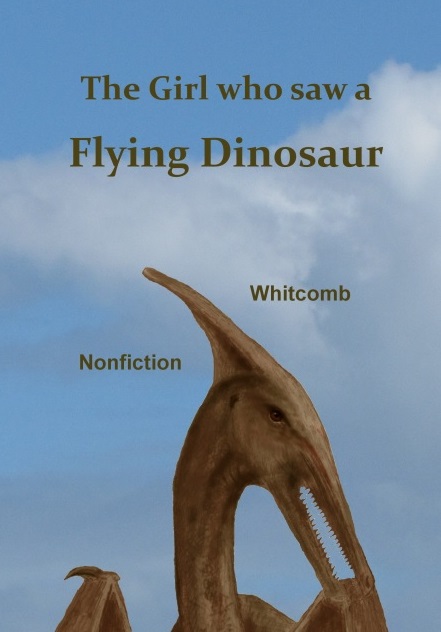With the Christmas gift-giving season approaching, I offer the following three nonfiction books that I have written, each of them about evidences for non-extinct pterosaurs, what many Westerners call “pterodactyls.”
Before getting into the differences between these cryptozoology books, let me be clear: Not one of them was written entirely for an LDS audience. Even the one that has the most references to Mormon beliefs and perspectives, Searching for Ropens and Finding God (fourth edition)—that nonfiction is highly praised, on Amazon, by readers who appear to be non-LDS Christians, although it is sometimes unclear, from the Amazon reader-review comments, what religious beliefs they have. In short, SFRFG can be enjoyed by many readers, except for some atheists who are sometimes vocal to support their atheism.
.
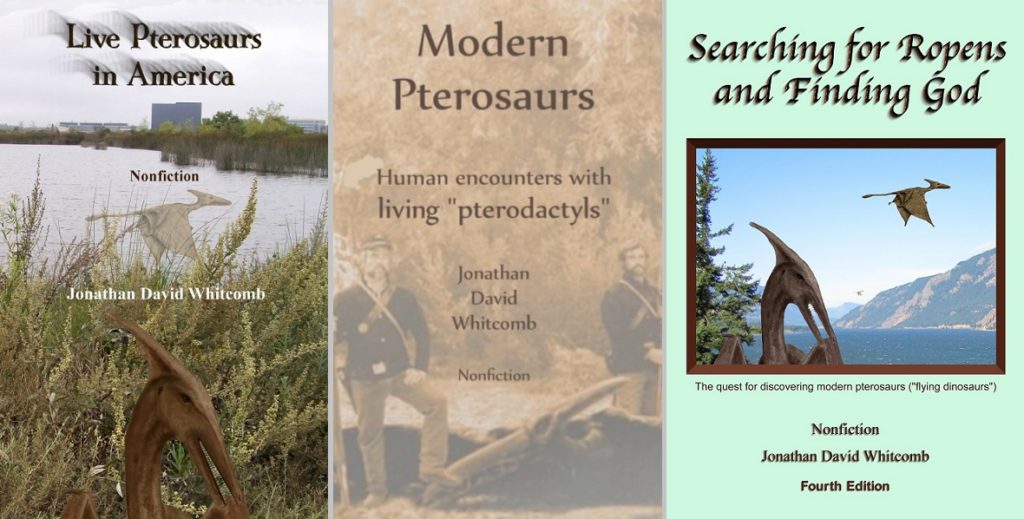
Three nonfiction books that can be enjoyed and understood by LDS readers
.
Does the Existence of Modern Pterosaurs Support Christian Beliefs?
I’ll paraphrase what some skeptics have said: “The existence of a living pterosaur would not disprove evolution.” Are those skeptics right or wrong there? Yes and very much so. But how they’re right is less important, and relevant and how they’re wrong is more so.
In a broad perspective, the reality of modern non-extinct pterosaurs is more in harmony with a belief in the Flood of Noah, with preservation of species on the Ark, than it is with the origin philosophy of Charles Darwin. In a narrow sense, the official scientific discovery of one species of pterosaur would not necessarily disrupt popular teachings about the general theory of evolution, yet the reality of decades of eyewitness sighting reports, and many years of research on those reports, show us that a number of species of pterosaurs are very much non-extinct. That is something else.
Searching for Ropens and Finding God (4th edition)
My largest nonfiction, at 360 pages, is more about true-life adventure than religion. I added “and finding God” to the title of later editions because so many atheists were becoming offended at passages that promoted faith in God and belief in the Bible. The revised title helps non-religious readers avoid purchasing the book by mistake when they assume it is only about cryptozoology.
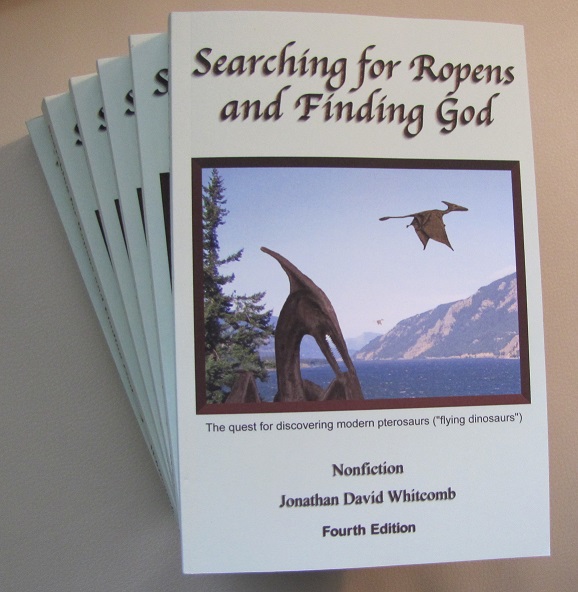
The quest for discovering modern pterosaurs
.
Most readers are not offended by the limited references to religious beliefs in SFRFG. I don’t recall any non-LDS reader being offended by any reference to my Mormon faith. Most of the religious promotion is for believing in the Bible and acting on that faith. In fact, it has more references to Baptists than to Mormons, at least when one looks up those two faiths in the index.
I recommend SFRFG, fourth edition, as a Christmas gift for both LDS and non-LDS readers, for it shows how explorers and researchers of different Christian faiths can work together in a common cause.
The following are some online sellers of Searching for Ropens and Finding God:
Amazon cryptozoology nonfiction
Fly above common true-life adventures, and dive into what may become the most unsettling scientific discovery since Copernicus and Galileo . . .
Barnes & Noble – “Flying Dinosaurs”
The quest for discovering modern pterosaurs
.
Live Pterosaurs in America (third edition)
This paperback of 154 pages is less of a cross-genre than Searching for Ropens and Finding God: It’s mostly pure nonfiction cryptozoology. The eyewitness sightings are confined almost entirely to the 48 Contiguous States of the USA, but oh how broad are those encounters with extraordinary flying creatures!
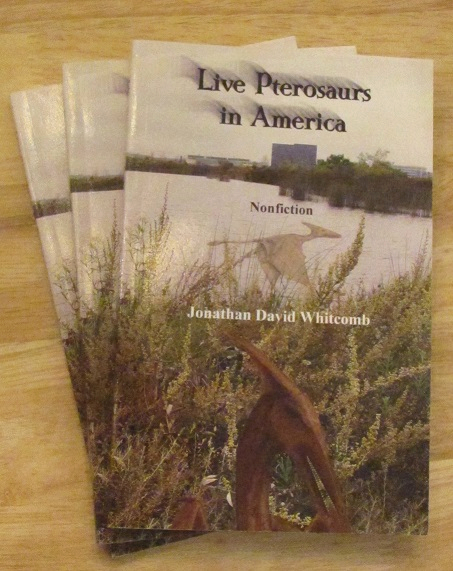
Flying creatures of cryptozoology – Pterosaurs
.
This third edition of LPA, which I self-published in 2011, is not anything like a complete collection of eyewitness accounts of possible pterosaurs in the USA. The more-credible reports are given more attention, and some of them are compared with each other, showing similarities in descriptions of the flying creatures.
Live Pterosaurs in America can be a delightful gift book for many readers, LDS or not, and many readers have been satisfied with a reasonably short reading on a subject that they had never before encountered.
Amazon – pterodactyls or flying dinosaurs
Many scientists have long assumed all pterosaurs died millions of years ago. Now take a whirlwind tour of many years of investigations in cryptozoology, and prepare for a shock: At least two species of pterosaurs have survived, uncommon, not so much rare as widely, thinly distributed.
Books a Million – Pterosaurs not extinct
.
Modern Pterosaurs (published in 2017)
This differs from the other two cryptozoology paperbacks about these flying creatures. Modern Pterosaurs has eyewitness reports, but they’re secondary, to support the main point: an old photograph that includes a pterosaur right in the photo.
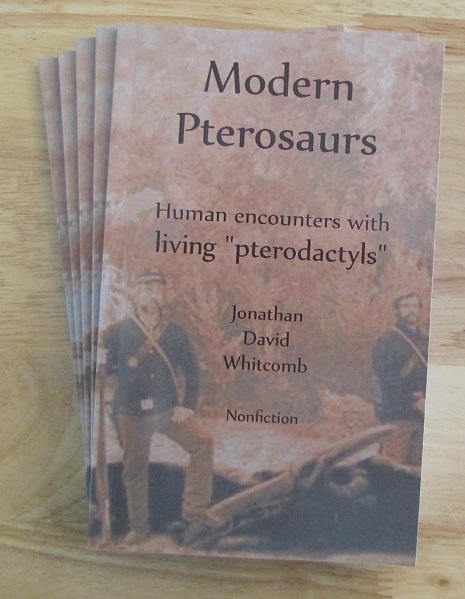
Modern Pterosaurs – by Jonathan Whitcomb
.
This is the shortest of the three paperbacks, at 116 pages. I’ll quote a few sentences from the second page of the Introduction:
Why don’t we dive into the Ptp photograph in the first chapter? After all, it’s the main subject of the book. . . . You need to know what people have been encountering around the world, before you can see clearly what’s in the Ptp photo. Once you know what’s been flying overhead, what people around the world have been encountering, you’ll be better prepared to see and understand the details in Ptp. You should then appreciate what has always been available to those with eyes to see.
I offer this book as a collection of evidences for the authenticity of the Ptp photo, not as if it were, by itself, proof beyond a reasonable doubt that the apparent Pteranodon must have been a pterosaur living in the 19th century but as an overall preponderance of evidence that a modern pterosaur was indeed photographed in the 19th century.
Createspace – Human encounters with living “pterodactyls”
First edition – This fully supports the literal Flood of Noah in the Bible, although the genre is nonfiction cryptozoology.
Barnes & Noble – Modern Pterosaurs
Now two scientists share their astonishing discovery: This is a genuine photograph of an actual animal that appears to have been a modern pterosaur . . .
.
Please contact me with any comments or questions: Jonathan Whitcomb
.
###
.
Nonfiction books by an LDS Author
Whitcomb’s book is nicknamed the “Bible of modern pterosaurs”
.
LDS Nonfiction?
Is the fourth edition of Searching for Ropens and Finding God especially for Mormon readers or is it for Christians in general or is it for nonfiction cryptozoology readers? I would say yes to all the above, yet parts of this book may be easier to understand when read by LDS readers.
.
